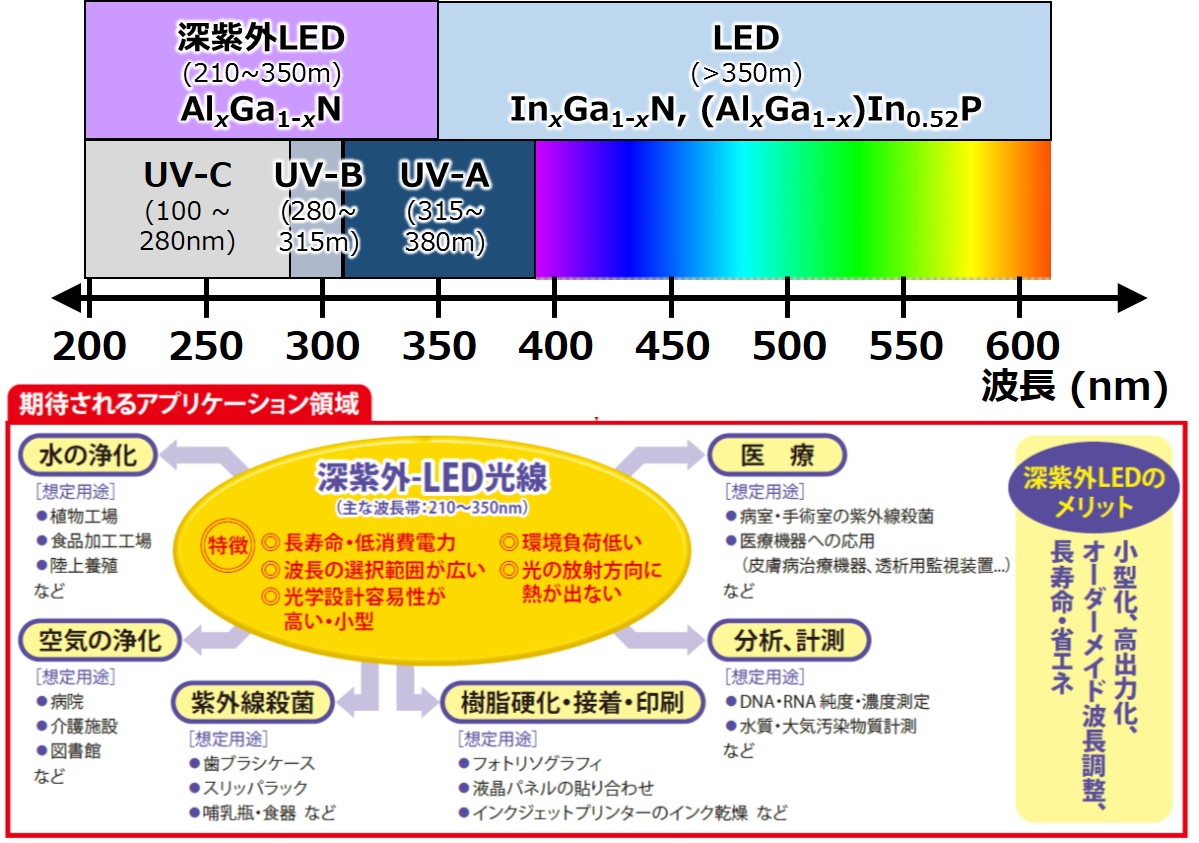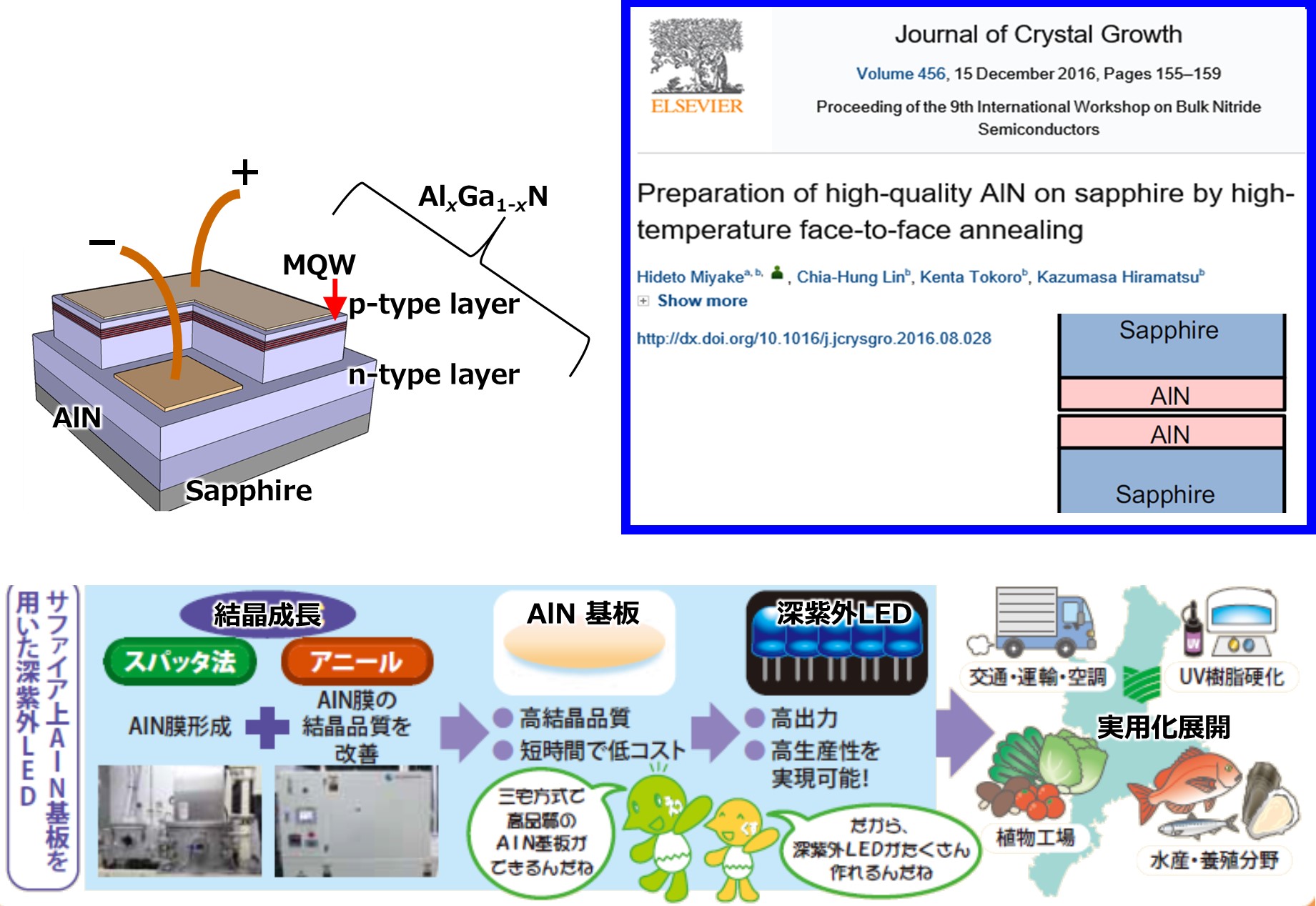 |
 |
Research contents
The Importance of Providing Hygienic Water through Sterilization Using Ultraviolet Light

According to the World Health Statistics 2014 [1], in 46 countries, less than 50% of the population has access to facilities with hygienic water. As a result of limited access to clean water, infectious diseases spread, leading to low survival rates among children, especially newborns and infants. To address this global issue, deep ultraviolet (DUV) light sources for sterilization are gaining attention. In particular, light in the UV-C region around a wavelength of 260 nm has been reported to be effective in sterilizing bacteria, and the water sterilization market (including mercury lamps) is expected to reach approximately 160 billion yen by fiscal year 2020 [2]. Currently, low-pressure mercury lamps are used in water sterilization systems, but they have drawbacks such as requiring high operating voltages, short device lifespans, and the inclusion of mercury, which may lead to production bans.
In contrast, deep ultraviolet LEDs offer several advantages: they operate at low voltages, are made from non-toxic materials, and have long lifespans similar to blue LEDs. However, challenges such as low light output and efficiency remain at this stage.
Our goal is to contribute to society by developing high-brightness, high-efficiency deep ultraviolet LEDs, thereby providing access to clean water for people around the world.
As described above, DUV LEDs can destroy biological DNA with high-energy light, making it possible to sterilize water and air without harmful chemicals. Their applications in agriculture and water resources are highly anticipated. Other proposed applications include resin curing, inspection, measurement, and analysis utilizing UV absorption.
[1] World Health Statistics 2014: http://www.unicef.org/gambia/Progress_on_drinking_water_and_sanitation_
2014_update.pdf
[2] Nikkei Electronics, October 2017 issue
Recent Research Results

To manufacture deep ultraviolet LEDs, aluminum nitride (AlN) substrates are essential, and research on their production methods is being conducted by groups both domestically and internationally. There are two main methods for producing AlN substrates: (1) Heteroepitaxial growth, where an AlN film is grown on a sapphire substrate, and (2) Homoepitaxial growth, where an AlN film is grown on an AlN substrate. In heteroepitaxial growth, the conventional method has been MOVPE. While the "sputtering method" is highly versatile and suitable for producing uniform films over large areas, it has had the problem of only yielding low-quality AlN substrates.
In response, we have developed a low-cost method to produce high-quality AlN substrates by applying high-temperature annealing to AlN substrates fabricated by sputtering. (This method is informally known as the "Miyake method.") This method has attracted global attention as an essential technology for the practical realization of high-power, low-cost deep ultraviolet LEDs.
Currently, our entire Semiconductor Device Laboratory is engaged in research to clarify the mechanisms behind this academically important method and to develop elemental technologies for applications in optical and electronic devices such as deep ultraviolet LEDs.
Contact
Prof. Dr. Hideto Miyake
miyake*elec.mie-u.ac.jp
(Please change * to @.)
For future students
We are constantly looking for excellent students motivated to join our group. For Master and Ph.D. positions, please contact us by e-mail.